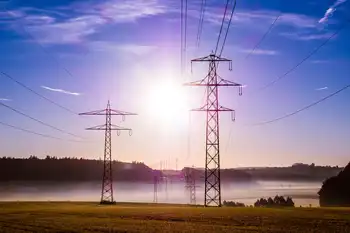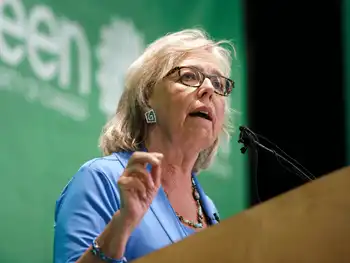Refunds may end for ag electric users
FRESNO, CALIFORNIA - A long-standing policy that has allowed agricultural users of electricity to collect hefty refunds when overcharged may be coming to an end.
An administrative law judge with the California Public Utilities Commission is reviewing a settlement agreement that would curb the refund windfalls.
Pacific Gas & Electric Co. and two farm organizations have proposed the change, saying it will allow them to develop a better definition of an agricultural user and curb the litigation over misclassifying customers.
Opponents say it is unfair to amend the rules that have resulted in millions of dollars in refunds to dozens of PG&E agricultural customers, including San Joaquin Valley cotton ginners and almond hullers.
"We've been overcharged by more than $65,000 per year, and we're now trying to recover that money from PG&E," said Ali Amin, president of Primex Farms, a pistachio huller in Wasco. "It seems outrageous to me that PG&E now is trying to change the rules and walk away from their responsibility for the overcharges."
Under current guidelines, PG&E customers that are placed in the wrong rate class are eligible for refunds going back three years.
The new proposal would allow farm operations to be reclassified, but not to collect three years' worth of overcharges.
Dan Cooley, a PG&E attorney, said the proposed changes are in the public's best interest and would help develop clarity on how the utility company classifies agriculture.
"It also would limit the likelihood of litigation around the edges and reduce the incentive for someone to come in on a contingency basis and get involved," Cooley said.
For several years, the Fresno-based consulting firm Utility Cost Management has handled many of the reclassification cases before the CPUC.
The company has successfully recovered more than $18 million in refunds from PG&E on behalf of its agriculture clients.
UCM representatives have argued that companies such as almond hullers and cotton ginners don't change the form of the product, one of the qualifiers for being considered a commercial user.
"They are carving out a special rule for ag customers that would eliminate their right to a refund," said Paul Kerkorian, managing partner with UCM.
The Fresno consultant says he is baffled that the rule change was agreed to by the Agricultural Energy Consumers Association and the California Farm Bureau Federation.
But Ron Liebert, associate counsel for the California Farm Bureau, said PG&E's earlier proposal for a new agriculture definition was far worse than the current proposal.
"We believe that there was a possibility that some members would be pushed out of the agriculture schedule, and the ability for some folks to switch from commercial to agriculture would be severely limited," Liebert said.
Michael Boccadoro, executive director of the AECA, defended his organization's support of the proposal, saying the CPUC was growing weary of the agricultural rate challenges.
Boccadoro said the AECA and the Farm Bureau Federation are working with PG&E to try to resolve the issue and come up with a better definition for an agricultural user.
In exchange for agriculture's support, PG&E has agreed not to amend the definition for one year.
Related News

New fuel cell could help fix the renewable energy storage problem
LONDON - If we want a shot at transitioning to renewable energy, we’ll need one crucial thing: technologies that can convert electricity from wind and sun into a chemical fuel for storage and vice versa. Commercial devices that do this exist, but most are costly and perform only half of the equation. Now, researchers have created lab-scale gadgets that do both jobs. If larger versions work as well, they would help make it possible—or at least more affordable—to run the world on renewables.
The market for such technologies has grown along with renewables: In 2007, solar and wind provided just 0.8%…




